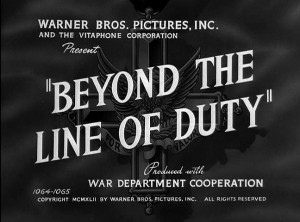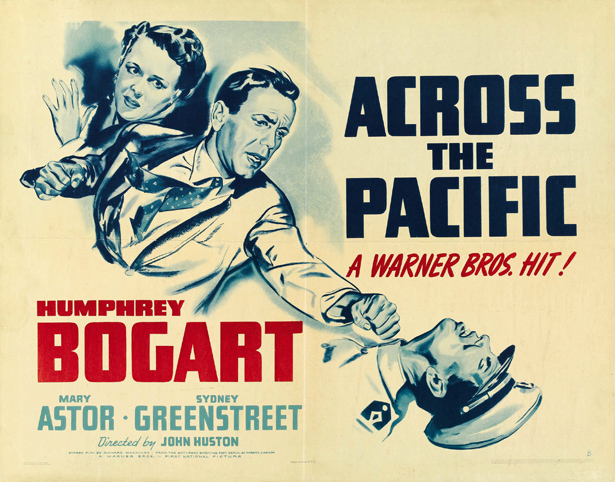‘Beyond the Line of Duty’ Released
 On November 7, 1942, Warner Brothers Studios released its third wartime film short, Beyond the Line of Duty, directed by Lewis Seiler and narrated by future President Ronald Reagan. Beyond the Line of Duty detailed the heroic exploits of B-17 pilot Lt. Hewitt “Shorty” Wheless during the Battle of the Phillipines (1941) whose badly-mauled plane and crew shot down seven Japanese “Zeros” before making a crash-landing at night with three flat tires. For his efforts, Wheless was awarded the Distinguished Service Cross, earned mention in President Roosevelt’s Fireside Chat on April 28, 1942 and was given Beyond the Line of Duty‘s starring role. The short proved popular and, at the 15th Academy Awards in 1943, Beyond the Line of Duty took home the Oscar for Best Short Subject.
On November 7, 1942, Warner Brothers Studios released its third wartime film short, Beyond the Line of Duty, directed by Lewis Seiler and narrated by future President Ronald Reagan. Beyond the Line of Duty detailed the heroic exploits of B-17 pilot Lt. Hewitt “Shorty” Wheless during the Battle of the Phillipines (1941) whose badly-mauled plane and crew shot down seven Japanese “Zeros” before making a crash-landing at night with three flat tires. For his efforts, Wheless was awarded the Distinguished Service Cross, earned mention in President Roosevelt’s Fireside Chat on April 28, 1942 and was given Beyond the Line of Duty‘s starring role. The short proved popular and, at the 15th Academy Awards in 1943, Beyond the Line of Duty took home the Oscar for Best Short Subject.
Like its predecessor shorts, Winning Your Wings starring Jimmy Stewart and Men Of The Sky, Beyond the Line of Duty sought to raise morale and spur enlistment for the air service. Warner Brothers would release only one further wartime short, The Rear Gunner, also starring Ronald Reagan, before the growing demand for training films became overwhelming and the First Motion Picture Unit took over as the USAAF’s primary film production unit; adopting the line ‘We Kill ‘Em With Fil’m’ as its motto.
This post by Collin Makamson, Red Ball Express Coordinator at The National WWII Museum



